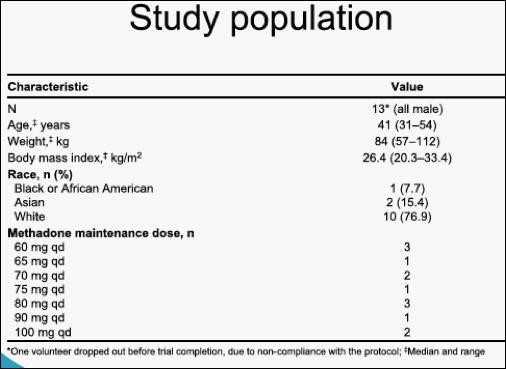Methadone Clinic Earlimart CA
Home
Methadone Clinic Earlimart CA Resources and Information Online
A 2004 GAO study notes that placement of clinics can impede recovery and exacerbate relapse: “Although these clinics are intended to help those in need of rehabilitation, patients who seek treatment must navigate their way to and from the clinics in an environment in which illegal sales of narcotics are daily occurrences. Food and Drug Administration issued a caution about methadone, titled “Methadone Use for Pain Control May Result in Death.” The FDA also revised the drug's package insert.
The starting dose depends on the type and quantity of drugs being used at onset of treatment. Abuse of methadone poses a risk of overdose and death. People taking methadone should contact their doctor if they: have difficulty breathing; become very drowsy and breathing slows down; have little movement of the chest with breathing; have a fast or slowed heartbeat; feel faint, extremely dizzy, confused, have irregular heartbeats or any other symptoms that are not typical. Today, methadone clinics can be found in locations that you may least expect because of overall improvements in the delivery of methadone treatments.
Even more Info About on methadone

More Info About on methadone Earlimart CA
Farbenindustrie AG at the Farbwerke Hoechst who were looking for a synthetic opioid that could be created with readily available precursors, to solve Germany's opium shortage problem.[63][64] On September 11, 1941 Bockmühl and Ehrhart filed an application for a patent for a synthetic substance they called Hoechst 10820 or Polamidon (a name still in regular use in Germany) and whose structure had only slight relation to morphine or the opiate alkaloids. (Bockmühl and Ehrhart, 1949[full citation needed]) It was brought to market in 1943 and was widely used by the German army during WWII.[63] In the 1930s, meperidine went into production in Germany; however, production of methadone, then being developed under the designation Hoechst 10820, was not carried forward because of side effects discovered in the early research.[65] After the war, all German patents, trade names and research records were requisitioned and expropriated by the Allies. The analgesic activity is shorter than the pharmacological half-life; dosing for pain control usually requires multiple doses per day normally dividing daily dosage for administration at 8 hour intervals.[52] The main metabolic pathway involves N-demethylation by CYP3A4 in the liver and intestine to give 2-ethylidene-1,5-dimethyl-3,3-diphenylpyrrolidine (EDDP).[1][53] This inactive product, as well as the inactive 2-ethyl-5-methyl-3,3- diphenyl-1-pyrroline (EMDP), produced by a second N-demethylation, are detectable in the urine of those taking methadone. Other putative mechanisms of methadone-related tooth decay include craving for carbohydrates related to opioids, poor dental care, and general decrease in personal hygiene.
More Resources For how to make methadone
In contrast, female rats consumed 46 mg/kg/day or 88 mg/kg/day for two years. Concomitant use with CNS depressants: -Assess the appropriateness of concomitant use -If the decision is made to begin this drug: Initial dose: 2. Help current methadone clients in other cities find your clinic in order to set-up methadone guest dosing. Caution should be exercised when methadone is administered to a nursing woman. The action of methadone in maintenance treatment is limited to the control of narcotic withdrawal symptoms and is ineffective for relief of general anxiety. Methadone Effects question 5 Methadone Dependence Misuse of methadone can easily lead to methadone dependence.
Below are Some Even more Resources on 5 milligram methadone Earlimart CA
That opioid is completely unpredictable as it builds up in your system and even the conversions that are out there are very risky to go off of as everyone's metabolism is different and with methadone, the conversion is not straight forward at all. Dose proportionality of methadone pharmacokinetics is not known. Other drugs may interact with methadone, including prescription and over-the-counter medicines, vitamins, and herbal products. The major hazards of methadone are respiratory depression and, to a lesser degree, systemic hypotension. After the first one, the dosage amount can be gradually scaled up by 5-10 mg every three days. Lowest, Average and Highest Dosage The maximum safe maintenance dosage is between 60-120 mg. Head Injury And Increased Intracranial Pressure The respiratory depressant effects of opioids and their capacity to elevate cerebrospinal-fluid pressure may be markedly exaggerated in the presence of head injury, other intracranial lesions or a pre-existing increase in intracranial pressure. Did the methadone have enough time to get into my system or did I lose it when I threw up?. The methadone maintenance treatment program must be approved by the state and federal governments and must treat patients according to specific federal and state laws and must be accredited.
Click Here for More Information
Previous Next
You may also like:
Methadone Clinic Evanston WY
Methadone Clinic Commerce City CO
Methadone Clinic Frankfort Square IL
Methadone Clinic Park Hills MO
Methadone Clinic Winchester VA